#britannia row studios
Photo
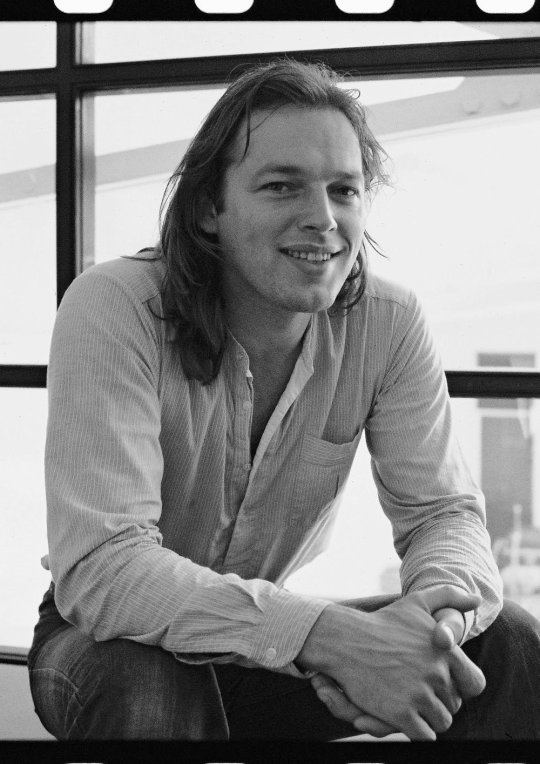
David Gilmour - Britannia Row Studios, Islington London, United Kingdom, 1978. Photo by Watal Asanuma
235 notes
·
View notes
Photo

Storia Di Musica #261 - Pink Floyd, Animals, 1977
Le Storia Musicali di Febbraio, che iniziano eccezionalmente di sabato, avranno come matrice comune un aspetto che all’inizio della ricerca mi sembrava molto più presente, ma alla prova dei fatti non è affatto vero. Se infatti è molto facile trovare e ricordare canzoni che si ispirano ad un libro famoso, lo è molto più raro per gli album che prendono spunto da un libro. In effetti, se volessimo essere pignoli, pochissimi dischi sono strutturati come concept sulle vicende di un libro, qualcuno in più invece prende spunto, in molti casi in maniera decisiva, da un romanzo, un racconto o una raccolta per sviluppare dei temi simili a quelli del libro- fonte. E da questa seconda categoria che ho pescato le storie dei dischi di Febbraio. Che inizia con un gruppo che nel 1975 era probabilmente il più famoso (e ricco) del mondo. Reduci dall’accoppiata storica e leggendaria di The Dark Side Of the Moon e Wish You Were Here (due dei più grandiosi e leggendari dischi di tutti i tempi) i PInk Floyd erano sul punto di prendersi una pausa. Ma tramite un annuncio immobiliare, comprano un intero isolato della Chiesa a Britannia Row, a Islington, quartiere Nord di Londra. Furono creati dei magazzini e uno studio di registrazione all’avanguardia, dove la band iniziò a provare qualcosa. L’aria era piuttosto tesa: David Gilmour subì un clamoroso furto di strumenti, tra cui preziose chitarre, le idee erano piuttosto differenti sul da farsi fin quando Roger Waters iniziò a indirizzare le scelte su un binario ben preciso. Ispirandosi a La Fattoria Degli Animali, pensò a canzoni che descrivevano una simbolica struttura sociale piramidale, come nel romanzo, ma se nel capolavoro orwelliano la critica era alla dittatura Stalinista, qui gli animali sono schiavi del capitalismo, del perbenismo e sono uno dei più aspri e critici attacchi alla società contemporanea in musica. Waters scrive tutte le musiche e i testi di Animals, che esce nel gennaio 1977, tanto che è il primo disco dei dieci dei Pink Floyd senza nessun contributo di Richard Wright o di Nick Mason; Gilmour canta solo in un brano, e gli vengono accreditati solo due brani (per una band da decine di milioni di copie, era punto centrale). Waters pesca dalle sessioni di Wish You Were Here due canzoni, Gotta Be Crazy (che fu suonata anche qualche volta dal vivo) e Raving And Drooling: furono riadattate con i titoli Dogs e Sheep. Paragonando il comportamento umano a quello delle bestie, sono quindi presenti Pigs (Three Different Ones), al vertice della piramide sociale, che sarebbe la classe dirigente, i Dogs, arrampicatori sociali, arrivisti disposti a vendersi per il potere, e Sheep, al singolare, la massa di persone più deboli che hanno bisogno di un leader per sentirsi al sicuro. Questi tre brani costituiscono il nucleo centrale del disco, e sono anticipati e poi conclusi da una canzone acustica, solo voce e chitarra, Pigs On The Wing 1 e 2, in cui Waters descrive cosa succederebbe se lui e sua moglie non si curassero l'una dell'altro (Parte 1), e del rapporto di amore reciproco tra loro (Parte 2). Musicalmente, abbandonata l’epica di Wish You Were Here, qui la musica accompagna la cupezza dei testi, mai così potenti e forti. In Dogs si dice: Sordo, muto e cieco, continui solo a far finta\Che tutti sono sacrificabili e nessuno ha un vero amico\E ti sembra che quello che bisogna fare è isolare il vincitore\E tutto è fatto alla luce del sole\E tu ci credi veramente, tutti sono assassini; in Sheep: Cosa ottieni facendo finta che il pericolo non è reale\Mite e obbediente segui il capo\Lungo sentieri ben battuti nella valle d'acciaio\Che sorpresa! Uno sguardo di shock nei tuoi occhi\Ora le cose sono proprio quello che sembrano\No, questo non è un brutto sogno. Tra l’altro con una voce modificata da un vocoder, un roadie scozzese del gruppo legge una versione modificata del Salmo 23, il cui testo riprende la tematica del seguire ciecamente il leader (In verdi pascoli, mi conduce presso calme acque\Con luccicanti coltelli\ Egli libera la mia anima\Mi fa penzolare dall'alto, appeso a ganci\Mi trasforma in cotolette d'agnello). In Pigs (Three Different Ones), vengono presi in esami tre pezzi grossi: di due, un uomo e una donna, non è tanto facile capire chi siano (e le ricostruzioni che vedono gli attacchi di Waters a Margaret Thatcher non sono credibili, dato che divenne primo ministro solo nel 1979, l’album è di tre anni prima), ma di una è diretto lo strale. Waters canta: Ehi tu, Whitehouse, ah ah, sei una sciarada, in riferimento a Mary Whitehouse, capo dell’Associazione Nazionale dei telespettatori e franca promotrice di una campagna contro la TV, dove vedeva solo sesso e violenza. Ha un record niente male: i Deep Purple, presi di mira per lo stesso motivo, le dedicarono una canzone, Mary Lord, in Who Do You Think We Are? del 1973, insieme a Frank Pakenham, Settimo Conte di Longford, parlamentare che in quegli anni si batté molto contro la rappresentazione dell’omosessualità e redasse un rapporto, The Longfort Report, sugli effetti della pornografia, tanto che fu soprannominato dai detrattori Lord Porn. Un disco cupo, aspro, nerissimo anche nell’uso molto più potente dei sintetizzatori e di assoli drammatici di Gilmour, passò alla storia anche per la copertina, una delle più famose di tutti i tempi. Insieme a Storm Thorgerson e Aubrey Powell della mitica Hipgnosis, Waters chiese alla stessa azienda che realizzò i dirigibili Zeppelin di costruire un gigantesco Maiale aerostatico, che fu battezzato Algie. Come sfondo Waters scelse la centrale elettrica di Battersea, che con le sue quattro ciminiere agli angoli sembrava una gigantesca mucca stecchita capovolta. L’idea era di fotografare Algie tra le ciminiere, ma il 2 Dicembre 1976 un violento temporale fece prendere il volo a Algie che arrivò a 3000 metri di altezza. Powell informò la Polizia, e i piloti della Raf che videro un maiale gigante volare sopra Londra bloccarono per qualche ora i voli a Heathrow, fin quando verso sera un contadino del Kent chiamò per lamentarsi che un maiale atterrato nella sua proprietà infastidiva il bestiame. Il secondo giorno andò tutto per il meglio, ma Powell conservò il cielo plumbeo del giorno precedente, che fa da perfetto sfondo all’intera atmosfera dell’album, a cui aggiunse le foto di Algie del giorno dopo. Un disco che vendette moltissimo, nonostante la visione pessimistica del mondo che conteneva. E che ha un’ultima storia legata. Durante il tour In The Flesh per promuovere il disco, dove compare in tutta la sua grandezza anche Algie, a Birmingham, uno spettatore, secondo la leggenda vestito punk, lanciò una bottiglia contro Waters, che in tutta risposta rabbiosa gli sputò in faccia. Negli stessi mesi in cui il disco veniva alla luce, Johnny Lyndon dei Sex Pistols si presentava spesso con una maglietta con la scritta “I hate Pink Floyd”, da lui definiti “i dinosauri del rock”, epiteto che va ancora oggi per la maggiore: rappresentavano “quello che non volevano essere”. Solo anni dopo si scoprirà la verità, che era solo un modo per farsi pubblicità, tant’è vero che Nick Mason negli stessi Studi di Britannia Row produrrà Music For Pleasure dei The Damned, famoso gruppo punk, nel 1977, anno sacro del movimento. Tuttavia, quell’episodio fu centrale per Waters nell’esplorare l’incomunicabilità di certi pensieri, che sarà alla base del successivo, e leggendario, lavoro del gruppo.
53 notes
·
View notes
Audio

Joy Division - Isolation (1980)
Ian Curtis / Peter Hook / Stephen Morris / Bernard Sumner
from: "Closer" (LP)
Post-Punk
JukehostUK
(left click = play)
(320kbps)
or
JacobsmCom
(left click = play | right click = "save as")
(256kbps)
Personnel:
Ian Curtis: Lead Vocals
Bernard Sumner: Guitar / Synthesizers
Peter Hook: Bass Guitar
Stephen Morris: Drums / Electronic Drums / Percussion
Produced by Martin Hannett / Joy Division
Recorded:
@ Britannia Row Studios
in Islington, London England UK
between March 18 - 30, 1980
Album Released:
on July 18, 1980
Factory Records
"Isolation" is perhaps the closest the band ever got to synth pop,
but it would be more accurate to see it as the cousin to the all-electronic compositions of Kraftwerk and Suicide.
- Ned Raggett (AllMusicCom)
#Joy Division#Isolation#Post-Punk#1980's#Factory Records#Closer#Martin Hannett#Ian Curtis#Bernard Sumner#Peter Hook#Stephen Morris
10 notes
·
View notes
Text
Time for your Rock Report
Stone Temple Pilots and Live have announced a co-headlining tour for this summer and fall. The 19-city run will kick off on August 16th in Concord, California, and make stops in Phoenix, Dallas, Chicago, and more before wrapping up on September 15th in Indianapolis, Indiana. Special guests Our Lady Peace will appear on the first two dates, while Soul Asylum will feature for the remainder of the tour. General on-sale begins Friday, March 22nd at 10 am local. The two bands are joining forces to celebrate the 30th anniversaries of their two albums, Live's Throwing Copper and Stone Temple Pilots' Purple.
Pink Floyd have announced they will release a Dolby Atmos mix of their tenth studio album, Animals, on Blu-ray and digital formats through Warner Music on May 17. The band said the Animals 2018 Remix - Dolby Atmos, will feature the 2018 remix by their longtime producer James Guthrie as well as High-Resolution stereo and 5.1 mixes alongside the 1977 original stereo mix, and digitally. The upcoming remix will feature new artwork in the digipack format with a 16-page booklet, a sticker and a postcard. The album's iconic cover of a floating pig between two chimneys of the Battersea Power Station, conceived by Roger Waters and designed by Storm Thorgerson, has been reimagined for the new release. The new take, created by Aubrey "Po" Powell and Peter Curzon, still features the pig and the power station but has been modernized with various light projections. According to a press release, with the new mix, "Listeners will feel like they are inside the song as music moves around and above them." The Animals record looked at the social-political conditions of mid-1970s Britain via George Orwell's classic "Animal Farm" that depicted different classes of people as animals. The album, which was recorded at the band's Britannia Row Studios in London, peaked at No. 2 in the U.K. and No. 3 in the U.S.
0 notes
Text
Saturday, February 3, 2024 2pm ET: Feature LP: Pink Floyd - Animals (1977)
Animals is the tenth studio album by the English rock band Pink Floyd, released on January 21, 1977 through Harvest and Columbia Records. It was recorded at the band’s Britannia Row Studios in London throughout 1976, and was produced by the band. The album continues the longform compositions that made up their previous works, including Wish You Were Here (1975). The album received positive…

View On WordPress
1 note
·
View note
Text
pink floyd, "have a cigar" (1975) - the extraction tapes
pink floyd, “have a cigar” (1975) – the extraction tapes
Pink Floyd: From Abbey Road to Britannia Row – The Extraction Tapes [Extraction, 1CD] (1975 “Wish You Were Here” Sessions-Unreleased Alternate Studio Versions (German Issue-500 Copies – Extraction ER 102)
youtube
View On WordPress
0 notes
Photo
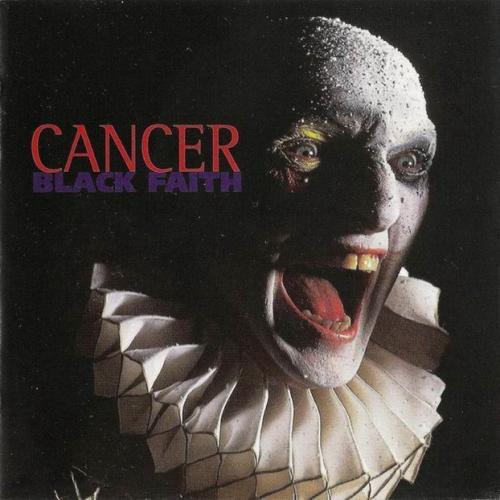

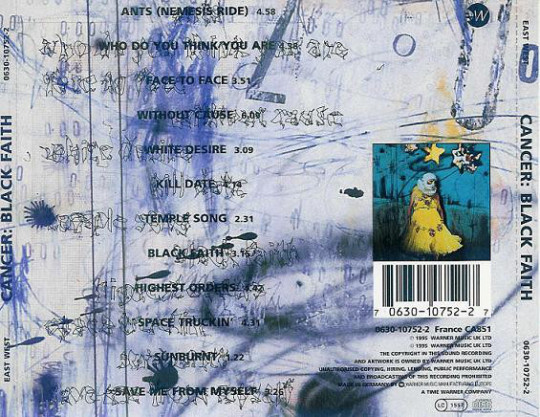
Cancer - Black Faith
1995
#Cancer#black#faith#death metal#thrash metal#gore#death#rape#John Walker#Barry Savage#Ian Buchanan#Carl Stokes#EastWest#Great Linford Studios#Britannia Row Studio
3 notes
·
View notes
Photo
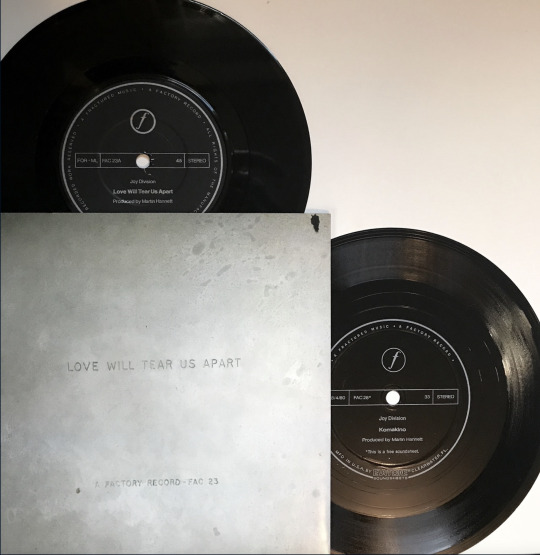
Joy Divison “Love Will Tear Us Apart” 1980. Factory Records. Today, July 15th, would have been Ian Curtis’ 65th birthday (b. 1956, d. 1980). This single is darkly post punk in an enigmatic format: Side A’s “Love Will Tear Us Apart” is at 45 rpm. Side B is the even darker “These Days” but also has an unlisted second rendition of “Love Will Tear Us Apart,” both at 33-1/3 rpm which is startling if you forgot to switch the speed (which, of course, I did). Tucked inside the sleeve is a bonus flexi-disc 7″ soundsheet of “Komakino” (catalog FAC 28) and the excellent, highly danceable instrumental “Incubation” (catalog FAC Reject). Plus, just like the “Love Will Tear Us Apart” single, the flexi has an unlisted track, the vaguely industrial instrumental “As You Said.” The note on the record states that “This soundsheet should not have cost you anything, wherever or however it was obtained.” According to Discogs, the flexi-discs were record store giveaways and the tracks are from the Britannia Row Studios session for Closer, March 18-30,1980 that didn’t end up on the album.
“Love Will Tear Us Apart” was Joy Division’s first hit, reaching #13 in the UK and #42 on the US dance chart. The title also appears on Ian Curtis’ grave marker; he committed suicide one month after the single’s release.
***reblogging myself from 2017
#joy division#ian curtis#love will tear us apart#factory records#post punk#7" single#flexidisc#vinyl
31 notes
·
View notes
Photo

This is soooo cool. The studio where Pink Floyd used to record has been converted. Architects worked with former Pink Floyd studio manager and her musician husband to transform the iconic Britannia Row Studios into two stunning industrial style flats. Clearly, I need one.


The existing studio space was comprised of a two story recording studio with live rooms, vocal booths, drum rooms and production suites. The new London property, which has been divided in two by a concrete staircase, has exposed brick walls throughout and is designed to remain true to its rock and roll history.

Some of the biggest names in music history recorded at the studios from Björk, James Blunt, Kate Bush and Pete Doherty to Joy Division, Manic Street Preachers, Kylie, New Order, Pulp, Snowpatrol, Westlife, Supergrass and original founders Pink Floyd themselves.

The renovation entailed stripping out the 1ft. thick sound-proofed interior walls back to the bare brick. Exposed pipes and concrete floors were restored and retained as part of the industrial look.

Some elements, like sliding glass doors were reclaimed.

Lovely view of the cozy living room from the kitchen.
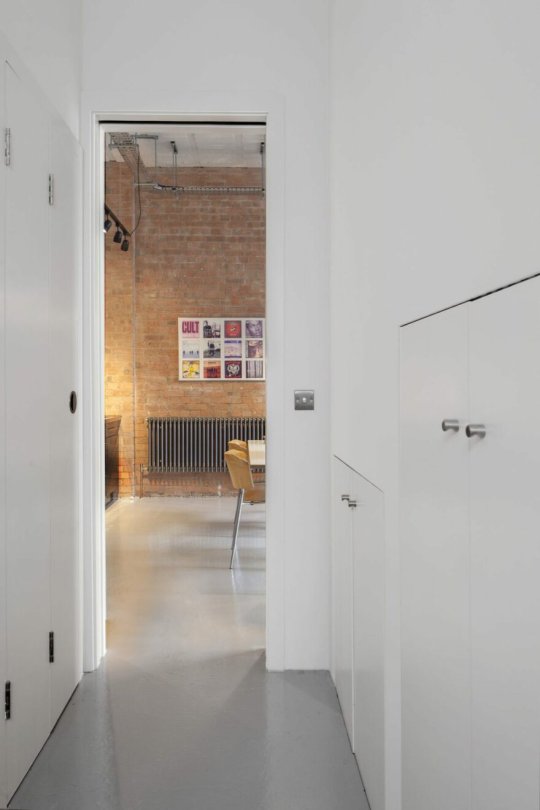
In the pass-thru to the bedroom, there’s storage and a pocket door to close it off from the rest of the apt.

White architectural features break up the brick walls and add interest.

A sliding barn door opens to the bath.

There’s a built-in armoire for clothing and a nice place beside it, perfect for a desk.
https://homeworlddesign.com/historic-pink-floyd-recording-studios-transformed-into-two-london-flats/
56 notes
·
View notes
Text

1976
(x)
Taped vocals at Queen gigs? No way, sez roadie. It's 100% FREDDIE
John Harris is sometimes considered the fifth member of Queen when it comes to live shows. He's the blond haired terror who goes raising Freddie Mercury's vocals at just the right moment or tuning Brian May's guitar right on to Mercury's voice.
In other words he's Queen's (...), and in some ways he probably has more to do with what you hear of Queen on the road than the actual band members.
Recently I (...) him out of the studios where Queen had been piecing together their new "Day At The Races" album and over a pint of lager in a pub off Wardour Street he told how, although Queen may be classified as superstars, they still don't own the majority of their sound system.
In England, apparently, the band uses a system rented from the Britannia Row Company, which (...) over 8.000 watts and is a five way (...)
Pet hates, no problems
In the States Queen hire from Clair Bros, a company used by most touring acts on the road. This is an S-4 system not using the normal (...), but is similar in size to the English version.
(...)
According to Harris the technical aspect of controlling Mercury's voice, starting with the microphone and leading to the desk, takes some doing.
Talking to Candy McGaw
The vocal is (...) (...) a DBX 160 Limiter which reduces peaks in the "dynamics" at the voice — i.e. keeps it (...) sounding — and with this set Harris says he can then: "tune the whole system to Fred's voice."
Getting into another pint Harris gets on to a pet hate: "The difference in the sound you hear in any given hall, with and without an audience present."
This is quite a common beef with roadies, as inevitably there's a change when the hall is full or half full.
The audience absorbs various amounts of sound waves, so levels in sound may vary dramatically place to place.
His second big hate: "The on stage sound level of the band, (...) the level and location of the mixing desk!"
Harriss adds that he has no major problems for Queen's shows in large halls, but in small places, all sorts of difficulties arise.
Nonetheless he's still highly reliable: Mercury leaves (...) everything to him so far as Queen's sound is concerned.
He's also anxious to point out that: "Queen don't use backing tapes on stage. The intro tapes and special sound effects, e.g. the explosions and so on, are the only ones tracked in."
He says this because of past accusations against Queen of the band tracking (...) taped vocals during the show, something which many other acts do during their performances.
It's not the case when it comes to Queen, though. You're hearing 100% of Mercury's sounds.
Queen and Hyde Park
The Hyde Park gig came up in our conversation and Harris wanted to mention a few things about the day, overall.
"The reason Queen didn't sound overly-exciting dynamic-wise," he said, "was due to the sound level put on us by the Park officials.
"We couldn't even do an encore — the Park authorities called a halt to the show, Queen would have loved to come back out but they couldn't.
"I think it's important for a roadie to work for a band where music he likes.
"Unless you're gonna get a (...) at the end of it — well, I can't (...) bothering to put in the effort." — Candy McGaw
18 notes
·
View notes
Text
I finally moved to London last month. I have terrible timing because I’m now unemployed in central London and in lock down lol. On the upside I’ve been getting lots of walking in and wandered by Pink Floyds Britannia row studio. I didn’t realise how close it was.
#i desperately need a job#i think i’ll make ot to new tear without one#hopfully it wont take that long#my life is a joke#because im not a citizen i get zero support#lol
1 note
·
View note
Text
youtube
youtube
youtube
youtube
Reggae Britannia
(BBC Four, 2/11/11)
385 Willesden High Road is tucked away behind a row of dilapidated 19th century houses, its entrance obscured by high locked gates and a walled yard. But 385 is a treasure trove of reggae history. It's called Theorem, Music Village, and it's where we're recording several artist interviews for Reggae Britannia. As we arrive, there's a band in the studio rehearsing a romantic Lovers Rock number, there's a man up a rickety ladder painting the walls and another mopping up from an all night dance in the 'functions room' with its damp lino and garish red felt walls.
T-Jae, the tall soft-spoken proprietor of what was once called BBMC (the Brent Black Music Cooperative) helps us with our camera gear. He's got coffee brewing in the kitchen beside an open can of condensed milk. Before T-Jae's time this was a leisure centre filled with rattle of pinball machines and the click of snooker balls - now replaced by the drum 'n bass of reggae rhythms leaking from the studio.
We're here to interview Dave Barker, one half of the Dave and Ansell Collins vocal duo who set the teenage mods alight, back in 1971, performing a novelty number called 'Double Barrel'. Dave's a quietly spoken man with a hint of a stammer. He tells us how, when he first came to this country (and he stayed here ever after) he peered out through the window of his BOAC plane as it banked over the smoking chimneys of the snow-covered houses below and wondered 'how come they have so many bakeries in England?' On the drive from the airport he was shocked at seeing white men digging the road and taking out garbage: 'Wow man, that was strange, you didn't see those things in Jamaica'. Nor dogs wearing winter vests, nor steak and kidney pies, nor that little sparrow he spied pecking the top off a milk bottle. He can't help himself: Dave sings a refrain from Matt Munro's 'Born Free' and segues into 'Summer Holiday'.
Dave arrived in the U.K exactly ten years before Theorem opened its doors to top British and Jamaican reggae artists passing through. Today, there's the legendary Max Romeo sitting on bench in the winter sunshine, his grey locks neatly tucked into a woolly beret. In 1969, Max brought his wicked song 'Wet Dream' to Britain and its risqué lyrics - which got it banned in clubs and on the BBC - made it an anthem for skinheads in dance halls all across Britain. He sings a few lines, diffidently explaining how it caused an 'upstir' among the rebellious youth of the time. He's a little ashamed of it now because, by the mid 70s, Max had embraced the wisdom of Rastafari. That was when he wrote and recorded some of reggae's most powerful and memorable music in the Black Ark studio of Lee Scratch Perry: 'War In A Babylon' and 'Chase The Devil'. When those songs arrived here, first as pre-releases and then remixed by Island Records, they inspired our fledgling roots reggae bands and then the punks and then Bob Marley too. Max intones a few lines from 'Chase The Devil', an ironic, cautionary tale that has been covered or sampled by dozens of musicians - including Jay-Z in 'The Black Album' - and was featured in the video-game Grand Theft Auto.
'I'm gonna put on an iron shirt and chase Satan out of earth' he sings. 'I'm gonna send him to outer space to find another race'. Max explains: 'The devil is the negative within the psyche. Chasing the devil means chasing the negative out of your mind.' There are people wandering in and out while he speaks; musicians carrying drums and guitars into this studio that's cold as a morgue, or dropping off an amp or a heavyweight speaker, or they've come to pay their respects to the master, with a hug or a high-five.
T-Jae comes sauntering by with a piece of carpet under his arm to help our sound recordist dampen the 'live' acoustic of the room (yes, we still have a sound recordist on our crew) and he tells me that among the band members in the studio today is none other than Bigga Morrison. Bigga's not a front man like Max, but a keyboard virtuoso and music director of renown. Reggae royalty. The band take a another break for a smoke in the yard and Bigga, immaculate in pin-striped suit and brogues, describes growing up in this country as a second generation West Indian:
'My parents had experienced troubles and threats on the streets, back in the '50s, with the Teddy Boys and such, but they wouldn't discuss those things because they wanted to keep you free from the pressures. But as we grew up, we took our message and our fight onto the streets with the roots and culture music we played in bands like Steel Pulse and Aswad.'
Later during the interview, I asked Bigga to show us how the British reggae producers, back in the early 1970s, added violins to the Jamaican imports to make them sound 'more classical'. Unfortunately, he's lost his glasses and so can't read the score. Tee Jay's on hand to send for a replacement pair. Bigga fills in time by playing us a delightful new track by his band the Skatronics, but when the glasses arrive, they're all wrong for Bigga. He wears them anyway, and peers astigmatically at the music for 'Young Gifted And Black' which is layered in symphonic-style strings. Bigga (educated at Trinity College of Music) explains how Jamaican reggae gradually transformed into a British musical experience, first through the dub sounds and conscious lyrics of hardworking roots groups like Aswad and then by the bands that went platinum: the 2 Tone crowd, UB40 and The Police.
Bigga's being called back to rehearsals now, so we break for a late lunch. It's a choice of The New Golden Duck Chinese Take Away or the Caribbean place half a mile up the road. We do the walk and settle for salt fish and akee. Or rather, the others do. I choose the goat curry on plantains and soon regret it.
Back in Theorem, Bigga's at the keyboards and a couple of pretty female vocalists are delivering more saccharine Lovers Rock. And that's where we see Big Youth, in among them, gyrating his hips to the pounding bass and chugging upbeat of the guitar. He's chaperoned by a petite Italian lady from an artists' agency called Roots Rockers. She's Trish, and she's exhausted because they've only just returned from a nightmare flight from Spain. Trish is a miracle of calm and efficiency in the maelstrom of the struggling reggae business and it's clear all the artists adore her. Trish has offered us the opportunity to interview Big Youth, the toaster who excited British reggae fans with his revolutionary, rasta-inspired lyrics in the mid '70s. He's on top form today, his wiry body twisting and swaying in the interview chair as he sings lines from 'Hit The Road Jack', telling me how the great Ray Charles called him up one Christmas-time to admit that Big Youth's version was just 'the best'. 'Big Youth stole the scene,' he concludes. Modesty isn't one of Big Youth's virtues. But I can vouch for his status, and integrity. I first met him inside Randy's Record shop in Kingston Jamaica back in '77. He was checking out the sales of his album - visiting these record stores was about the only way an artist could tell how many were selling. He was as big a name as Marley at the time, and revered both on the island and over here. We met again - by chance - in Lagos, Nigeria, when he was on the run from some unscrupulous promoter. He's older and greyer now, but with no loss of energy, showmanship or sharp humour. And the red, gold and green implants in his front teeth are still there.
The filming days at Theorem haven't only been productive for our ninety minute programme, they've also been enormous fun. Maybe it's the familiarity and affection the artists have for this building, or maybe it's what they call 'the spirits' of the house: a combination of all those sounds and experiences imbedded in the cracking plaster walls, the creaky floorboards which once the feet of hallowed artists trod, or the reverberating bass you can hear down Theorem's honeycomb of corridors.
We'll be back here later in the week to interview the fiery, bubbly Lovers Rock singer Sylvia Tella, from Manchester; and Tippa Irie who came to fame DJing for the Saxon sound system, and maybe Dennis Bovell, the multi-talented producer/song writer and bass player, who did so much to anglicise reggae music in this country. Oh, and Trish says Dennis Alcapone's coming by, the dapper, bowler-hatted vocalist who brought a whole new style of toasting to these shores with songs like 'Guns Don't Argue': 'Don't call me Scarface, my name is Capone, C-A-P-O-N-E!'
For him, we'll haul our equipment boxes down the dark corridors of Theorem (we never could find the light switches, thriftily hidden away in recesses above door frames). Because we'll place him in a room, behind the studio, which is every reggae fan's dream, an Aladdin's cave of antique tape machines and mixers, and an expansive crimson casting couch. The wood-trim Rainderk desk dates from the early '70s when Reggae first exploded onto our pop charts with songs like 'Young Gifted And Black', bringing an upbeat musical thrill not just to those of Caribbean origin and the packs of skinheads who followed them around the country, but to the whole nation. This mixing desk was donated by Pete Townshend of The Who. It has made history since, recording reggae artists like The Wailers, Gregory Isaacs, Aswad, Janet Kay, Maxi Priest ... and so many more.
The traffic's slow on Willesden High Road as we leave the studios and T- Jae waves us into the evening gridlock and shuts the gates. Back-in-the-day, Theorem would be filling up with dreadlocked musicians and their natty entourage, ready for another all night session. Sometimes it still does, but with the proliferation of cheap home studios and a music industry in crisis, it's a whole lot quieter now. No sessions tonight. Just the rattling pipes, the whispering corridors, the vacant studio and the ghosts of British reggae history.
#2011#reggae britannia#bbc four#bbc#bbc news#reggae#roots reggae#video#youtube#black music#music#west indians#caribbean#black british#documentary#documentaries
2 notes
·
View notes
Audio
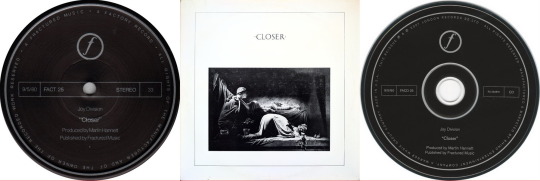
Joy Division - Isolation (1980)
Ian Curtis / Peter Hook / Stephen Morris / Bernard Sumner
from: "Closer" LP
Post-Punk
JukehostUK
(left click = play)
(320kbps)
Personnel:
Ian Curtis: Vocals
Bernard Sumner: Guitar / Synthesizers
Peter Hook: Bass Guitar
Stephen Morris: Drums / Electronic Drums / Percussion
Produced by Martin Hannett
Recorded:
@ The Britannia Row Studios
between March 18–30, 1980
in London, England UK
"Closer" Released:
on July 18, 1980
Factory Records

#Joy Division#Isolation#Closer#Factory Records#Post-Punk#1980's#Martin Hannett#Ian Curtis#Stephen Morris#Peter Hook#Bernard Sumner
9 notes
·
View notes
Audio
#alternative rock#rock#ex libras#wobpbly#wirebird#wirebird records#Britannia Row Studios#alternative
0 notes
Text
Another Brick In The Wall
Another Brick In The Wall
23 Nov 1979, Pink Floyd released ‘Another Brick In The Wall (Part 2)’ which rapidly topped the charts in the UK, followed by the US and a further 9 countries. Featuring children from Islington Green School in North London, close to Floyd’s Britannia Row Studios, it was the group’s first UK single since Point Me At The Sky in 1968, and their first chart hit since See Emily Play in 1967.…

View On WordPress
0 notes
Photo
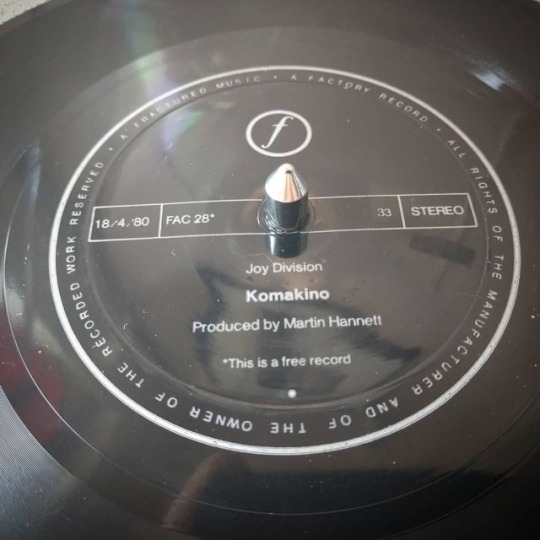
Joy Division - Komakino flexi 7", Factory Records 1980 R.I.P. Ian Curtis Free flexi of unused tracks from Britannia Row Studios session for Closer. - #vinyl #vinylcollection #vinylcommunity #flexidisc #joydivision #iancurtis #factoryrecords #postpunk (at Chicago, Illinois)
11 notes
·
View notes